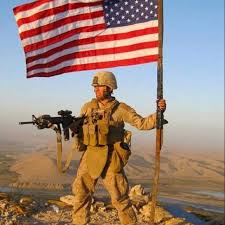New Military Publication Signals Shifting Attitude Toward Gays
Military Culture Turning a Corner
SANTA BARBARA, CA, – A new four-volume series on the cultural and psychological dimensions of American military life includes, for the first time, a chapter on the open service of gay troops. The chapter describes social and institutional changes needed to lift the ban on openly gay service members in the U.S. armed forces.
Experts say the inclusion of the topic in a publication endorsed by major military scholars reflects a shifted landscape on the question of military service by gays. Because a majority of junior enlisted service members now say that gays and lesbians should serve openly, according to an Annenberg poll, and because the vast majority of service members now say that they feel personally comfortable around gays and lesbians, integration is seen as a much less difficult option than would have been the case 12 years ago, when President Clinton tried to lift the gay ban.
The new chapter, “Sexual Orientation and Military Service: Prospects for Organizational and Individual Change in the United States,” was written by Dr. Gregory M. Herek, a professor of psychology at the University of California, Davis, and Dr. Aaron Belkin, Director of the Center for the Study of Sexual Minorities in the Military at the University of California, Santa Barbara. It appears in Military Life: The Psychology of Serving in Peace and Combat, which was published last month by the Greenwood Publishing group. It was edited by Lt. Col. Carl Castro, Dr. Amy B. Adler of the US Army Medical Research Unit, and Dr. Thomas W. Britt, formerly of the Walter Reed Army Institute of Research.
Described by scholars as a “path-breaking analysis” of the military experience and a “comprehensive review” of factors influencing military performance, the compilation addresses the emotional impact of combat, methods of coping with war, the role of spirituality in military life, issues affecting family life, cultural diversity within the armed forces, and more. Its authors include military officers, academic experts, healthcare professionals and others who have in primary research about the personal and institutional qualities of military life.
The chapter on gay service is unique in that it examines how military culture could smoothly integrate open gay and lesbian troops. It offers some practical issues relevant to replacing the [current] policy with one that does not discriminate against personnel on the basis of their sexual orientation.” This focus is unusual since debate on the topic more commonly centers on whether known gays should be allowed to serve rather than on how to implement a change in policy. “The decision of the editors and publisher to include analysis on how to modify military culture to accommodate this policy change is an important milestone,” said Nathaniel Frank, senior research fellow at the Center for the Study of Sexual Minorities in the Military. “It reflects an evolving understanding that the current exclusionary policy on gay troops is harmful and outdated, and that change is inevitable.”
The chapter authors explain that compliance with new regulations-in this case nondiscrimination toward gays-will be most stable and enduring if strong leaders enforce new expectations by creating high costs for noncompliance. The initial focus of change in this case, they explain, should be the behavior, rather than attitudes, of heterosexuals; but over time, it is reasonable to expect that personnel will conform to new policies because they believe their conduct reflects their identity as members of the institution.
Please click here to link to a pdf version of the chapter, also posted in Center Publications.
